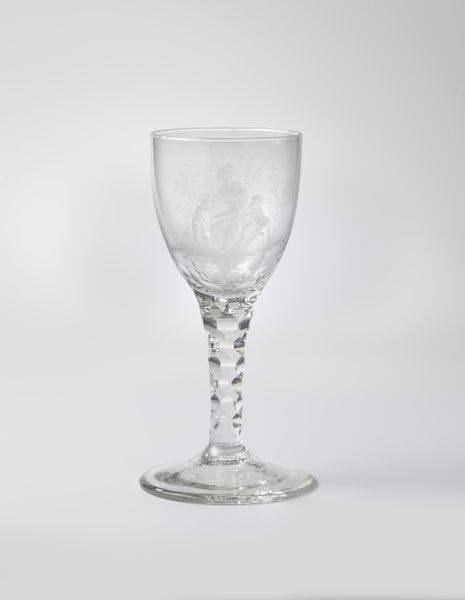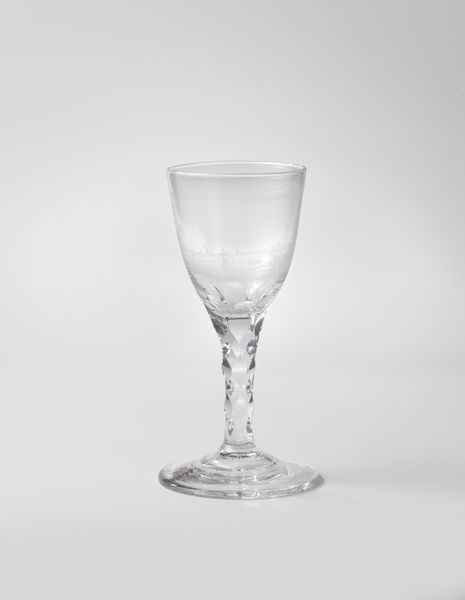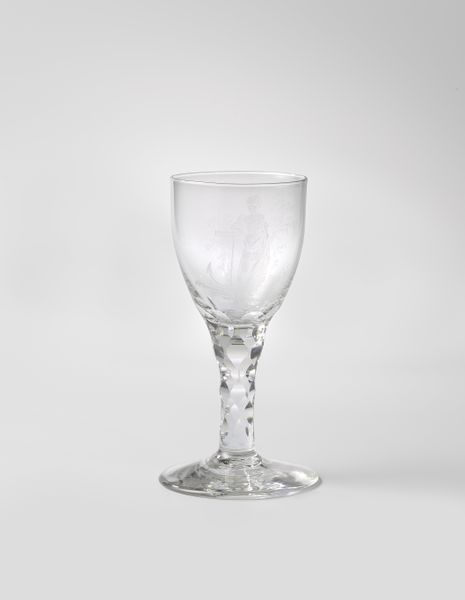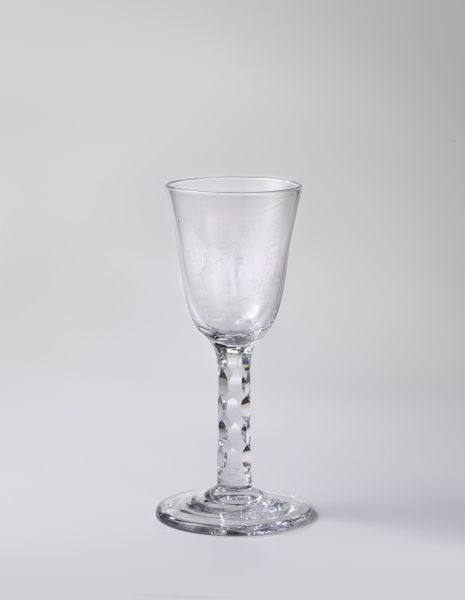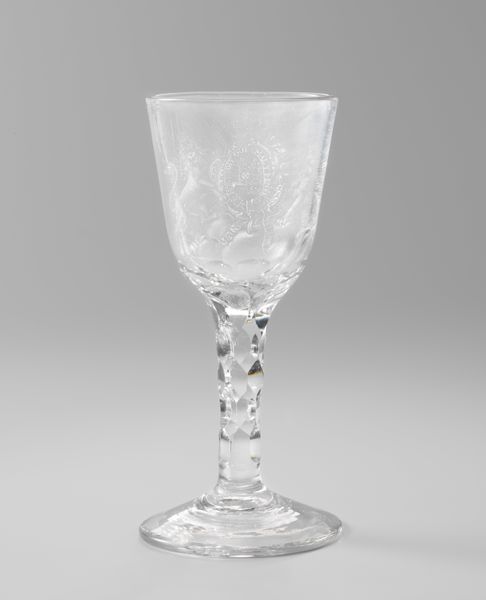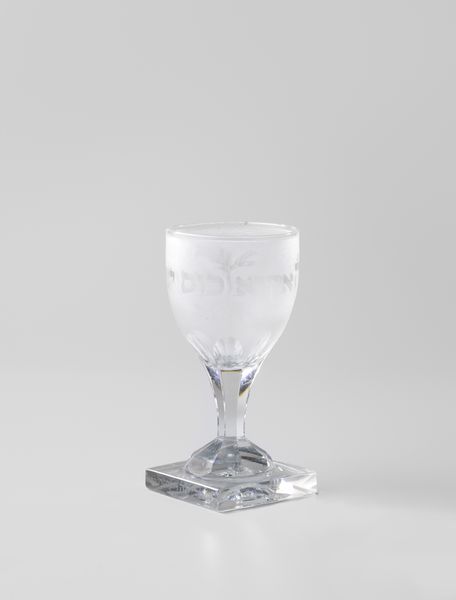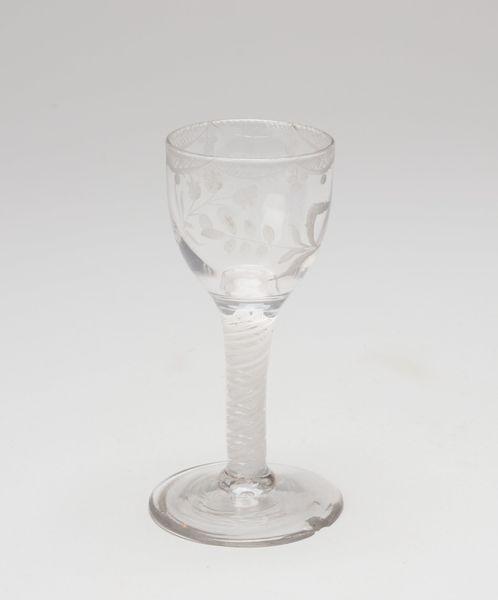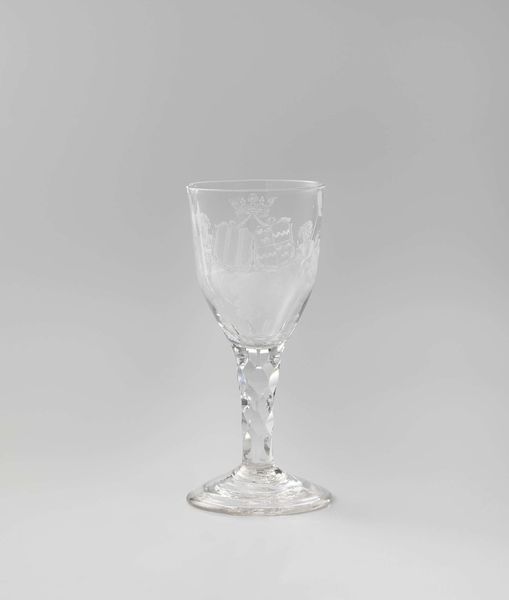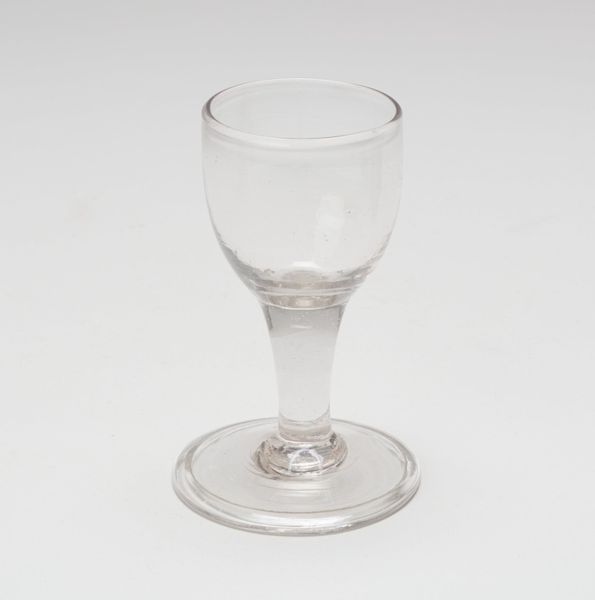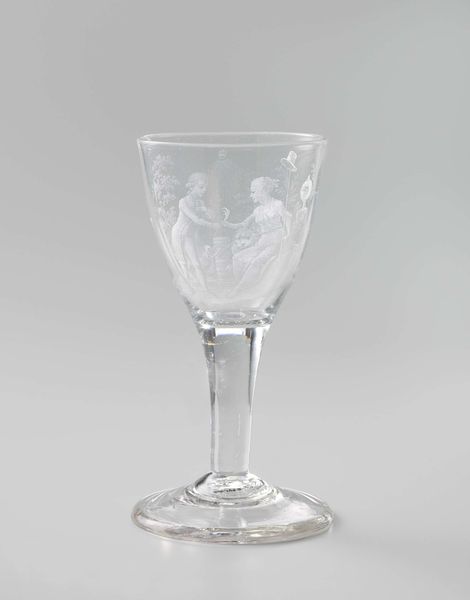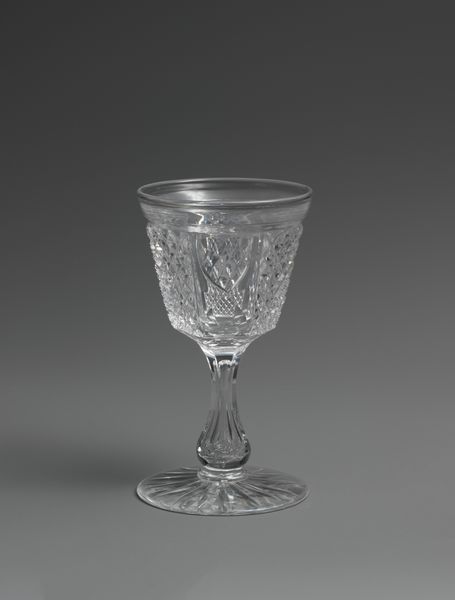
glass, engraving
#
neoclacissism
#
glass
#
genre-painting
#
engraving
Dimensions: height 12.8 cm, diameter 7.3 cm, diameter 7.3 cm
Copyright: Rijks Museum: Open Domain
Editor: This is a fascinating object! It's a glass goblet, dating from before 1798, and its title is “Kelkglas met een voorstelling van het koopmanschap” which I believe translates to something like, "Goblet with a depiction of commerce". There's an engraving on it. It's delicate, but also seems to celebrate something. What do you see in this piece? Curator: What strikes me is how this seemingly simple drinking glass reflects a complex nexus of power and identity. Consider the period – pre-1798. This was a time of immense colonial expansion, deeply rooted in mercantilism, with merchants ascending in social status. The "commerce" it depicts likely masked the exploitative dimensions of Dutch trade. Can you make out who is depicted? Editor: I can see figures, yes. It is difficult to see from here, but I think I see ships depicted. Curator: Precisely! Ships, symbols of trade and, remember, vessels of colonial reach. The goblet, used by elites, literally put the profits and consequences of mercantile exchange on display, in their hands and on their lips. Think about the function: To celebrate or commemorate through a toast, perhaps? Whose prosperity was truly being toasted, and at what cost? What were the conditions on board of those ships, in those colonies? This piece performs an insidious visual silencing of any sort of debate about its topic, even as it also offers a clear view of Dutch values. What do you make of the Neoclassical style in this context? Editor: I see how the Neoclassical style makes it feel very elevated and important. So, the form is used to give status and importance to something which should be looked at with scrutiny. Curator: Exactly. We have to ask ourselves, who was served by that illusion of progress? Who benefited from this vision? What narratives are missing from this glass? Editor: This really makes you think about what stories objects can hide, or even purposefully obscure. I am beginning to look at this quite differently now! Curator: Indeed. It's in these absences that the activist art historian finds their work – unearthing the narratives, demanding a reckoning with the full picture.
Comments
No comments
Be the first to comment and join the conversation on the ultimate creative platform.
